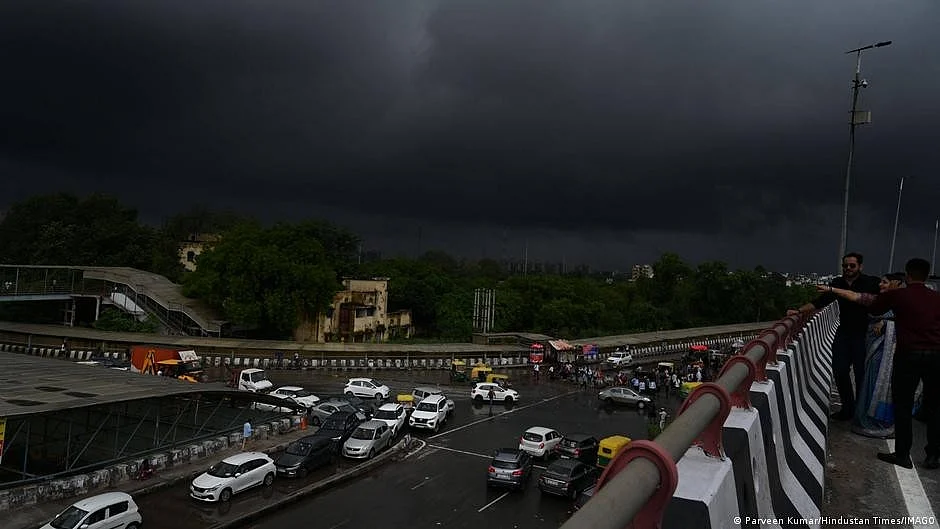India: How climate change is causing an environmental crisis
The heavy rains come after a heat wave that caused temperatures to soar to as high as 45 degrees Celsius (113 F) in large parts of India.

The rains also often cause widespread devastation and death from flooding and landslides.
Scientists say the rainfall is hard to forecast and varies considerably, but climate change is making the monsoon stronger and more erratic, increasing the frequency and ferocity of the floods.
"Human-induced climate change is already intensifying hydrological extremes in India, and the recent floods in parts of northern India are yet another example of how extreme events can be more disastrous in hilly regions than in plains," Akshay Deoras, a research scientist at the United Kingdom's National Centre for Atmospheric Science and the University of Reading's Department of Meteorology, told DW.
Deoras said extreme weather events were set to intensify as the planet continues to become warmer because of growing emissions of greenhouse gases.
"This does not necessarily mean that high-impact events would occur every year," he said, "but, whenever they occur, there would be a greater chance of them being more impactful than previous such events."
2022 extreme weather events
In 2022, the Center for Science and Environment, a New Delhi-based public interest research and advocacy organization, tracked extreme weather events in India.
It found out that India on the whole experienced extreme weather events on 314 out of the 365 days, meaning that at least one extreme weather event was reported in some part of India on each of these days.
The report concluded that these events caused more than 3,000 deaths in 2022, affected about 2 million hectares (4.8 million acres) of crop area, killed more than 69,000 animals used as livestock and destroyed roughly 420,000 houses.
The UN Intergovernmental Panel on Climate Change also released a 2022 report painting a bleak picture for India.
It warned that the country could face multiple climate change-induced disasters in the next two decades.
Unless greenhouse gas emissions are drastically reduced by 2030, it will become impossible for Indian authorities to reverse an imminent climate catastrophe, it said.
Heavy rains follow sizzling heat wave
"Climate change is accelerating at a fast pace, throwing off extreme weather events one after the other. This is faster than what we thought earlier," Roxy Mathew Koll, a climate scientist at the Indian Institute of Tropical Meteorology in Pune, told DW.
"South Asia has become the poster child of climate change," Koll said. "The entire region, not just India, is witnessing a clear trend in rising heat waves, floods, landslides, droughts and cyclones. This is already affecting the food, water and energy security of the region."
The heavy rains come after a heat wave that caused temperatures to soar to as high as 45 degrees Celsius (113 F) in large parts of India.
Even though the main summer months — from April to June — are always hot in India, temperatures have become more intense in the past decade.
And about 80% of the population also lives in regions highly vulnerable to disasters such as heat waves or severe flooding.
What needs to be done?
As part of India's climate change efforts, Prime Minister Narendra Modi's administration has vowed to cut the nation's greenhouse gas emissions to net zero by 2070.
But, against the backdrop of increasing extreme weather events, experts say the government needs to also focus on adaptation measures.
Also Read: Elon Musk tweets false climate claim
"More needs to be done for climate adaptation to prevent economic losses and food insecurity," Sunita Narain, the director of the Center for Science and Environment, told DW.
"We need to relearn land- and water-management strategies," Narain said. "India has much to learn, from not building habitations in flood-vulnerable areas to channeling river water instead of taming rivers within embankments that invariably break or just do not work."
"The moot question is: How fast can we learn in a climate-variable world?" Narain said. "The answers will determine our future. The window of opportunity to deal with the crisis is closing."
Follow us on: Facebook, Twitter, Google News, Instagram
Join our official telegram channel (@nationalherald) and stay updated with the latest headlines
